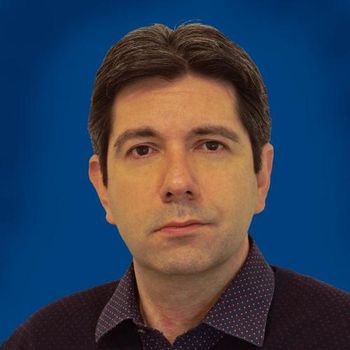
Gulf Coast Conference 2024: Spectroscopy and the Petroleum Industry
At GCC 2024 in Galveston, Texas, there will be several oral sessions that focus on spectroscopy’s role in the petroleum industry. We preview them here.
Analytical spectroscopy is playing a critical role in the petroleum industry. One of the important roles of spectroscopy was to obtain detailed information on the hydrocarbon chemistry of raw petroleum (1). Some of the biggest players in the petroleum industry, including Texaco and Marathon, for example, used nuclear magnetic resonance (NMR) spectroscopy to accomplish this goal, ensuring that high-quality petroleum goes to their customers (1).
It is not only NMR spectroscopy that has helped contribute to the advancement of the petroleum industry. Since its discovery in the 1920s, Raman spectroscopy has also made an impact. In oil and gas analysis, Raman is increasingly used to accelerate processes like custody transfer at refineries by providing quick, accurate compositional measurements (2). Although it does not replace fuel engine tests for octane ratings, ASTM D8340 allows for gasoline release based on Raman-predicted values, ensuring confidence in its results (2).
Other spectroscopic methods and statistical models used in this industry include chemometrics, which help verify similarities between petroleum samples, and Fourier transform infrared (FT-IR) spectroscopy, which is often used to determine the profile of petroleum (3).
This year, at the Gulf Coast Conference (GCC) in Galveston, Texas, spectroscopy’s role in the petroleum industry will be discussed at length in short courses and in talks. One of those talks will take place on October 15th from 8:30–9:00 am. This session, which is titled, “Rapid and Accurate Determination of Metals in Petroleum Distillates: ASTM D8110-17 Analysis with ICP-MS,” will be delivered by Aaron Hineman, Robert Forester, and Anthony Palermo of PerkinElmer.
This session will review ASTM method D8110-17 for determining trace elements in petroleum products using inductively coupled plasma–mass spectrometry (ICP-MS), highlighting challenges such as carbon-based spectral interferences that can cause inaccurate results (4). It will cover key inductively coupled plasma-mass spectrometry (ICP-MS) technological advancements that address these issues and present an analytical method for rapid, accurate metal measurement in light and middle distillate petroleum products (4). In this webinar, attendees will gain insights into overcoming common difficulties in elemental analysis with improved ICP-MS techniques.
As the leader of the talk, Hineman comes with extensive experience in atomic spectroscopy, spending 10 years developing analytical methodology in geochemical and environmental laboratories before serving as a Senior Field Application Scientist at PerkinElmer at PerkinElmer, working with ICP-MS and ICP-optical emission spectroscopy (ICP-OES) instrumentation (5). He currently serves as the Inorganic Product Line Leader at PerkinElmer.
A short course will also discuss the role of spectroscopy in the petroleum industry. This course will be led by Jean-Francois Borny, who is an Analytical Services Manager at Lummus Technology. Borny’s short course, titled “Analytical Training – Bridging the Gap Between Chemists and Process Engineers,” will be delivered on October 17th from 9:00 am–4:00 pm (6). Borny has worked in analytical chemistry for over 35 years, working in oil refineries, instrument manufacturers, pharmaceutical companies, and laboratories.
Borny’s course covers the basics of various analytical instruments, bridging the gap between chemists and engineers by discussing piping and instrumentation diagrams (P&IDs), flow diagrams, and sampling systems (6). It also addresses standardized methodologies and quality assurance and quality control (QA/QC), with a focus on real-world examples and an open Q&A format throughout the day (6). Some of the analytical techniques and instruments that will be discussed in this course include ICP-MS, X-ray diffraction (XRD), and X-ray fluorescence (XRF).
References
- Edwards, J. C. A Review of Applications of NMR Spectroscopy in the Petroleum Industry, in Spectroscopic Analysis of Petroleum Products and Lubricants. 2011, ASTM International, DOI:
10.1520/MONO10117M - McHugh, M. Raman Spectroscopy: The New Standard in Oil, Gas, and Petrochemical Laboratories. MarqMetrix. Available at:
https://marqmetrix.com/raman-spectroscopy-the-new-standard-in-oil-gas-and-petrochemical-laboratories/ (accessed 2024-09-27). - Lovatti, B. P. O.; Silva, S. R. C.; Portela, N. d. A. Identification of Petroleum Profiles by Infrared Spectroscopy and Chemometrics. Fuel 2019, 254, 115670. DOI:
10.1016/j.fuel.2019.115670 - Gulf Coast Conference, 2024 Oral Presentations. Available at:
https://www.gulfcoastconference.com/abstracts.php (accessed 2024-09-27). - Gulf Coast Conference, 2024 – Aaron Hineman. Available at:
https://www.gulfcoastconference.com/speakerBio.php?pid=7859&y=2024&r=a (accessed 2024-09-27). - Gulf Coast Conference, Presentation Profile. Available at:
https://www.gulfcoastconference.com/presentationProfile.php?pid=7831&y=2024&r=bio&rid=7831 (accessed 2024-09-27).
Newsletter
Get essential updates on the latest spectroscopy technologies, regulatory standards, and best practices—subscribe today to Spectroscopy.





